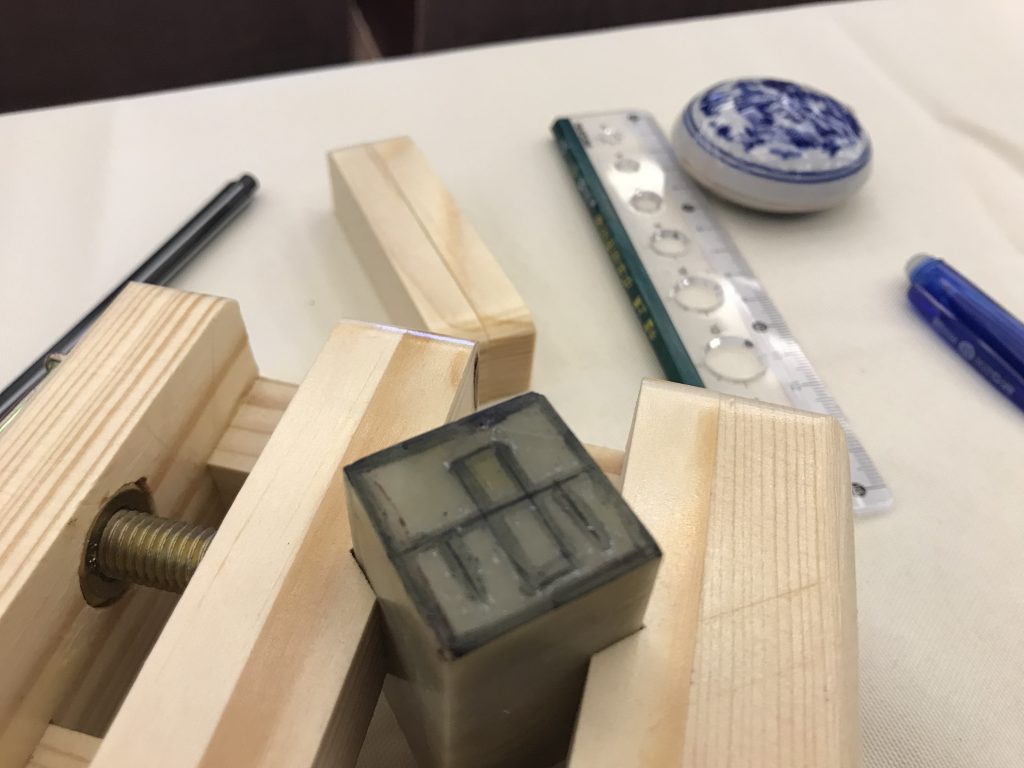A good way to spend last Saturday, 6 May, was a 2-hour session learning how to carve Chinese seals.
This was another in a series of Cultural Experiences to expose us to Chinese heritage and culture. Our lecturer was Li Zhe, a master carver who has a studio in Sanlitun, Beijing. He explained the history of Chinese seals and their purpose; then, we had a chance to try our hand.
The character we carved is the first of 2 characters that form the word China: zhōng guó meaning middle country, written 中国. Seal carving is a thousand-year traditional Chinese art form where a character denoting a name, profession or office is cut into the bottom of a finger-length tool from stone, metal, wood or other materials. The bottom part is the printing surface used for stamping. Seals were used to authorise documents, contracts, art, or any item needing a signature. I have noticed several contemporary artworks with a seal imprint where the artist’s signature usually appears. The process begins with sketching the design on one end of the seal stone.
Cutting a design into a piece of stone is not very easy. It requires a steady hand, decent eyesight, patience and care, but the result is very satisfying. We used a pot of bright red paste to ink the seal before printing. I did not ask about the composition of the paste, but I discovered that traditionally the paste is made from cinnabar, a form of mercury(II) sulfide.
Chinese characters are beautiful on their own. Carved into a small space, they are truly a work of art.



